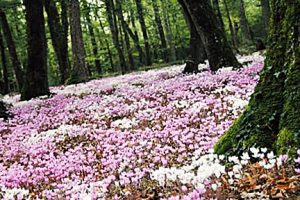
I used to think that gardening meant either perfectly executing a horticultural vision to the letter, using some kind of magic ‘green thumb’ with an error rate of zero, or else haphazardly hacking away at whatever cropped up and hoping for the best. That might sound ridiculous, but I simply didn’t understand that there’s a middle ground between these two extremes, which is where most gardening efforts take place.
Now that I have a more realistic understanding of what it’s all about, the challenge is to devise a planting scheme that (a) reflects my vision and (b) leaves things to their own devices so that natural biological processes can take place. This, I hope, will create a lower maintenance garden while also keeping things under control to a reasonable extent.
My plan of action involves things like naturalising a selection of bulb-type plants that will emerge at different points throughout the year, creating a non-stop floral display and attracting a variety of insects to the party. If all goes to plan, the cyclamen bulbs will kick things off autumn and winter, providing a much-needed smattering of cheerful colour and delicate petal action while other plants are dying down.
Towards the end of winter, the anemone flowers should be starting to pop up, followed closely by daffodils and jonquils. Spring is easy, with loads of plants being in flower around then, but the bulbs still need to be sequenced accordingly to really make the most of it. By summer, these will make way for dahlias and begonias, before the belladonna lilies herald autumn and we’re back where we started from.
Now, I realise that this sounds like a lot of work, and in a way it’s definitely that. Most of it is just planning, though, since the majority of these plants are able to take care of themselves quite adequately once they’ve gotten settled. At least, that’s what I’m going for. My role is simply to recreate their natural conditions faithfully enough to convince them that they’re in their natural habitat.